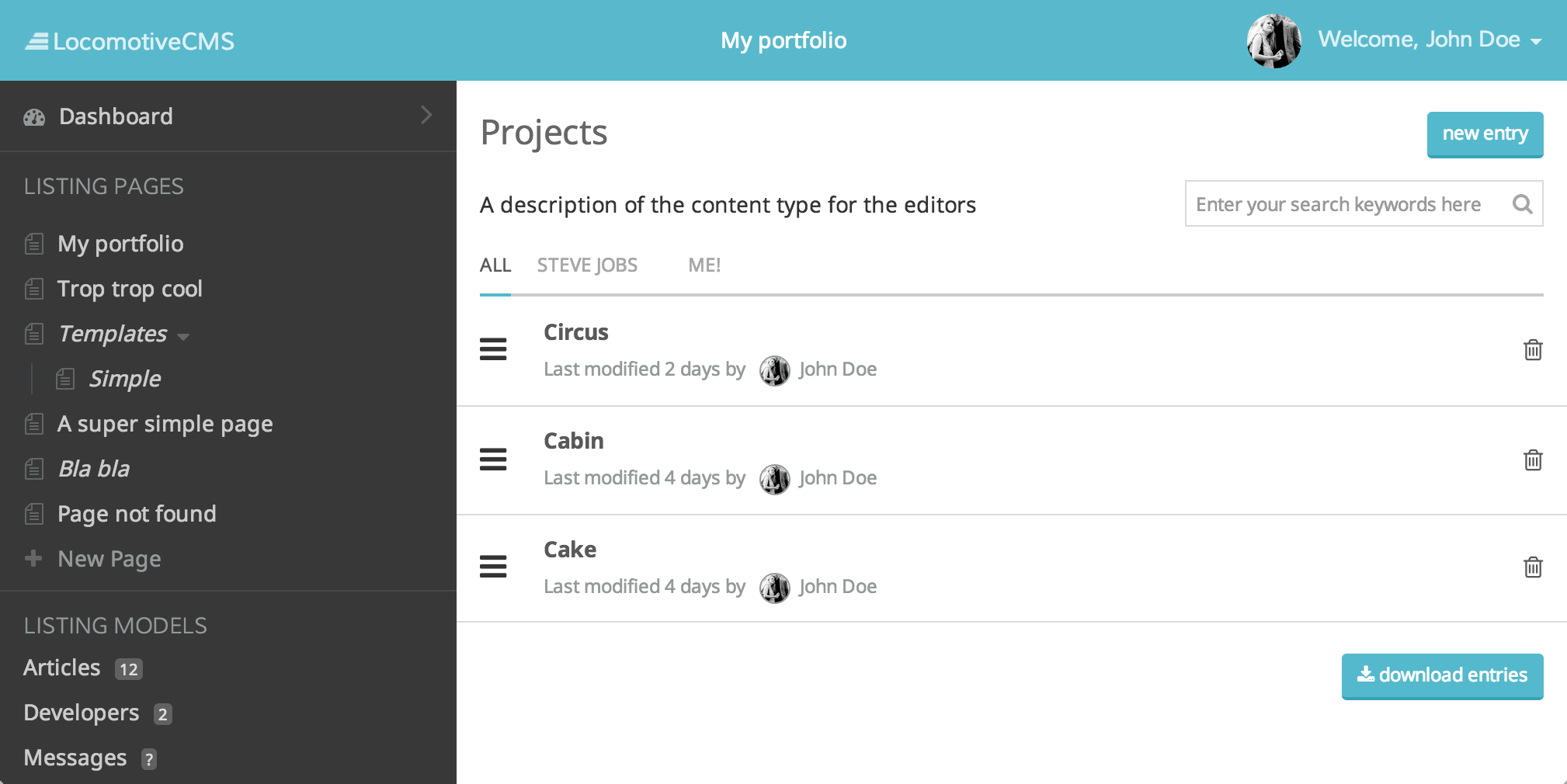Locomotive is an open source platform to create, publish and edit sites. It is designed to save your time and help you focus on what matters: front-end technology, standard development process and no learning time for your client.
Locomotive relies on a very original workflow.
- Sites are coded locally using our open source tool: Wagon. A desktop version (not open source) is also available here.
- Sites are deployed to the platform (engine) thanks to our internal API.
- A back-office for the end-users is automatically generated based on the custom models and editable regions described by the developers.
Visit the Locomotive official website here for more information.
As you can see from the commit logs, we are intensively working on the new V3 version. We kept all the features from our stable v2 version, we just replace the UI, upgrade the gems and refactor our code.
If you can not wait for playing with our new version, you still can use the current one (v2.5.x). Check out our installation guide.
- Multi-sites natively supported
- Uses Liquid, a simple and clean templating language
- Easy to add custom content types, no SQL needed
- Beautiful and intuitive editing interface
- Can fully localize all the content and pages
- Embed a Restful API to manage every site
- Develop and preview sites locally with your favorite tools (Wagon)
- Support for SASS, LESS, HAML and Coffee Script (Wagon)
Here is a list of the main gems used to power the Locomotive backend:
- Rails 4.2 - web framework
- Bootstrap - UI framework
- Mongoid 4.0 - Object-Document-Mapper for MongoDB
- Devise 3.4 - Authentication
- Carrierwave - Upload
- Get help or discuss Locomotive at the Locomotive Google group
- Follow us on twitter
Locomotive is an open source project, we encourage contributions. If you have found a bug and want to contribute a fix, or have a new feature you would like to add, follow the steps below to get your patch into the project:
- Install ruby and mongoDB
- Clone the project
git clone [email protected]:locomotivecms/engine.git - Setup a virtual host entry for
test.example.comto point to localhost - Run the tests
bundle exec rake - Write your failing tests
- Make the tests pass
- Create a GitHub pull request
For new features (especially large ones) it is best to create a topic on the Google group first to make sure it fits into the goals of the project.
Feel free to contact me at did at locomotivecms dot com.
Copyright (c) 2015 NoCoffee, released under the MIT license

